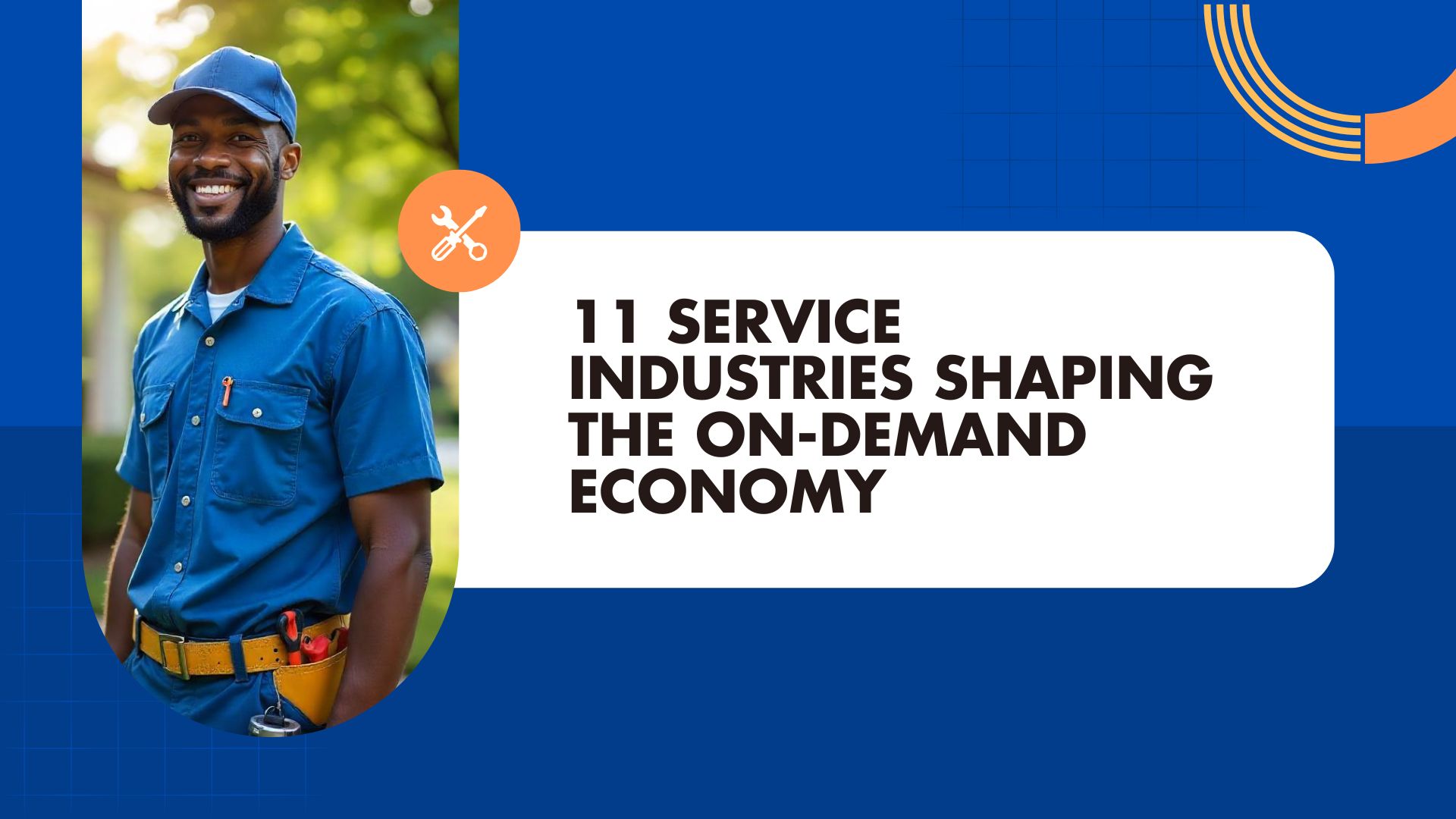11 Service Industries Shaping the On-Demand Economy


The on-demand economy is transforming how we access goods and services, driven by instant gratification and seamless digital experiences. With projections reaching $335 billion by 2025, this sector is booming—consumers now spend $57.6 billion annually on everything from food delivery to telemedicine. Nearly 22.4 million users, mostly millennials, rely on these services daily, reshaping industries with just a tap.
Smartphones and real-time apps have fueled this shift, making services faster, cheaper, and more convenient. Whether it’s ride-hailing, grocery delivery, or virtual tutoring, consumers prioritize speed, transparency, and quality. As businesses adapt, the on-demand model isn’t just a trend—it’s the future of commerce.
The food delivery sector is the most dominant player in the on-demand economy, valued at €83 billion in 2023, accounting for 1% of the global food market and 4% of food sold in restaurants and cafes.
Uber Eats
DoorDash
Deliveroo
Contactless Delivery – Post-pandemic demand for safer transactions.
Subscription Models – Services like Uber Eats Pass and DoorDash DashPass offer unlimited deliveries for a monthly fee.
Cloud Kitchens – Virtual restaurants operating solely for delivery reduce overhead costs.
AI-Driven Recommendations – Personalized menus based on past orders.
Drone & Autonomous Deliveries – Companies like Amazon and Wing (Alphabet) are testing drone deliveries for faster service.
Ride-hailing dominates venture capital funding, with over 75% of investments going to the top five on-demand firms—four of which are in transportation.
Uber
Lyft
Didi (China)
Bolt (Europe)
Electric & Autonomous Vehicles – Uber and Lyft are investing in EVs and self-driving tech.
Ride-Sharing Subscriptions – Flat-rate monthly plans for frequent commuters.
Telemedicine is a $57.6 billion industry, with on-demand doctor consultations becoming mainstream.
AI Diagnostics – Chatbots and AI tools for preliminary diagnosis.
Remote Monitoring – Wearables that track vitals in real-time.
Virtual Clinics – Platforms offering 24/7 access to specialists.
Teladoc
Amwell
Doctor on Demand
Global on-demand retail is projected to hit multi-billion USD by 2025–2030.
Same-Day Delivery – Amazon Prime Now, Instacart.
Live Shopping – Social commerce via Instagram, TikTok.
Amazon Prime Now
Instacart
Shein (Fast Fashion)
Personalized, on-demand learning is growing rapidly.
Language Tutoring (VIPKid)
Test Prep (Chegg)
Skill Development (Outschool)
On-demand fitness is expanding with AI trainers and hybrid models.
Peloton
Nike Training Club
FitOn
A major driver of the on-demand economy, with Airbnb and Booking.com leading.
Last-Minute Bookings
AI Travel Assistants
Critical for last-mile delivery efficiency.
GPS Tracking
Automated Notifications
FedEx
DHL
ShipBob
15-minute delivery models (e.g., Getir, Gorillas).
AI Inventory Management
Dark Stores (Delivery-only warehouses)
Includes plumbers, cleaners, electricians.
TaskRabbit
Thumbtack
Handy
Rising demand for mobile spa and beauty services.
Glamsquad
Urban Company
Soothe
The on-demand economy is reshaping industries by prioritizing speed, convenience, and digital innovation. From food delivery to telemedicine, consumers now expect instant access to services at their fingertips. As AI, automation, and sustainability drive further growth, businesses must adapt or risk falling behind.
Monacgo: 7/1253 Subramania Siva Street, NGO colony, Nagamalaipudukottai, Madurai – 625019, Tamil Nadu, India.
Mobile: +91 9789308131
Monacgo: 403 Starkweather Ave, Cleveland, OH 44113, United States
Mobile: +1 (585) 632-0256
Email: support@zipprr.com
Disclaimer: The keywords Gojek, Airbnb, Uber, UberEats, UrbanClap, Amazon, Carousell, ChatGPT, Youtube, Facebook, Turo, Practo, TaskRabbit, TikTok, Udemy, Whatsapp, Tinder and Letgo are solely used for marketing purposes, and we are not associated with any of the mentioned companies in any form. The source code and design of our products are fully owned by sellers. We are not using any of their copyrighted materials.
© 2025 Zipprr. All rights reserved.
